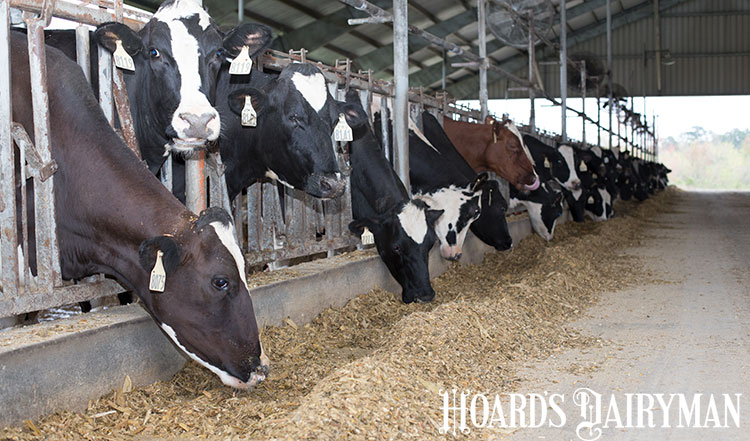
“Research clearly shows that poor feedbunk management can diminish the cow’s expected response to forage quality,” shared Rick Grant in a recent Miner Institute Farm Report. “And, in a feeding season where variable and poor-quality forage will be the norm, forcing the herd to consume feed in a poor environment will make a bad situation truly horrible.”
In the northern U.S. this year, lower quality forages are certainly a concern with a wet spring and cool summer. For that reason, Grant recommended paying special attention to feeding programs this coming year.
That begins with feed accessibility.
Grant explained that accessibility determines cows’ responses to forages, and if they can’t get the forage, they can’t respond to it. Feed should be available to the herd at all times if there’s a concern over forage quality. Research done at Miner Institute has shown that overstocking the pen can also reduce a cow’s ability to deal with lower quality forages.
“Under competitive feeding situations, excessively coarse or lower fiber digestibility forages may limit intake of lactating cows due to eating time requirements that exceed available time at the feedbunk,” the fiber specialist said.
For lower producing cows, high-quality forages can actually cause a reduction in milk production, according to some studies. For that reason, Grant recommended saving the best forage for the high production group on the farm.
He concluded, “Herds that focus on cow comfort and bunk management this winter will get more milk from their forages — guaranteed — than those who ignore their cows’ feeding environment.”








